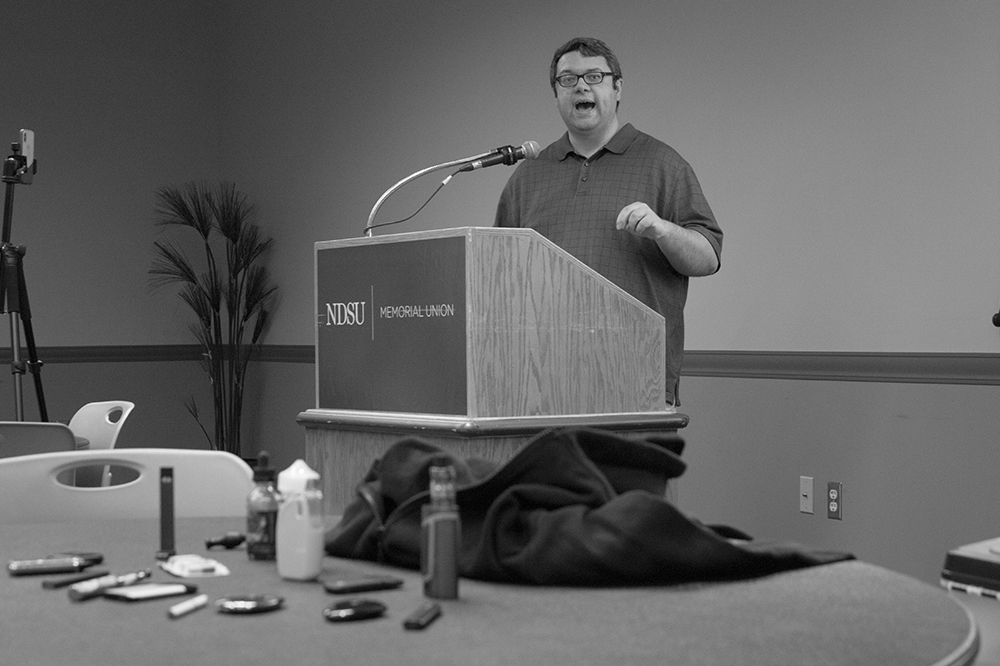Two experts revealed risks and misconceptions of popular product

Kelly Buettner-Schmidt is an associate professor in the College of Nursing with an affinity for researching vaping. Her presentation April 2 focused on her publicized study of electronic cigarette juice.
She researched the amount of nicotine in the liquid and whether it coincided with the labels. The study revealed that a majority, 51 percent, of E-liquid found in North Dakota stores is not what it seems. The nicotine found in the liquid was in some cases 172 percent higher than the package reported.
The study was published in two different journals in 2016, according to Buettner-Schmidt. She said her and her team are working on a new, more comprehensive study.
Buettner-Schmidt said she has been in tobacco control and prevention since 1991. The new age of tobacco, e-cigarettes are battery powered atomizers that heat up liquid nicotine, propylene glycol, glycerin and flavoring to create aerosol.
The distinction between vapor and aerosol is important, according Buettner-Schmidt. “For the general public, (vaping) kind of means evaporate,” Buettner-Schmidt. “You think of kids. You think of water boiling. It’s all gone, and there’s nothing left.” This could lead some to
Buettner-Schmidt was speaking during North Dakota State’s Health Week. The speaker after her, Jason McCoy, is a tobacco prevention coordinator for Clay County.
McCoy said many people are behind the times when it comes to tobacco. “For the lion’s share of people,” McCoy said, “they don’t understand we’re not talking about cigarettes anymore.” According to McCoy, a principal at one of the schools he works with told him, “Cigarettes are not the problems in our schools,” the problem is vaping. McCoy said schools are having issues with vaping on a daily basis.
The statistics back up this observation. While cigarette use among teens is down in both North Dakota and Minnesota, according to McCoy, 1 in 5 students vape. This is not a new issue, but it was a new question on the survey in 2017, according to McCoy.
When it comes to these products’ age restrictions, students are pros at circumnavigating the law. “I talk to high school students,” McCoy said, “and I ask them this simple question: how long would it take you to get a hold of a Juul? (The answer is) 5 to 20 minutes.”
This problem is exacerbated by marketing, according to McCoy. “It’s very youth-centric; it’s all the same thing the cigarette companies used to use.” This phenomenon is due to the fact that many of the same marketing companies are selling vapes now. These advertisements are not illegal like cigarette ads.
